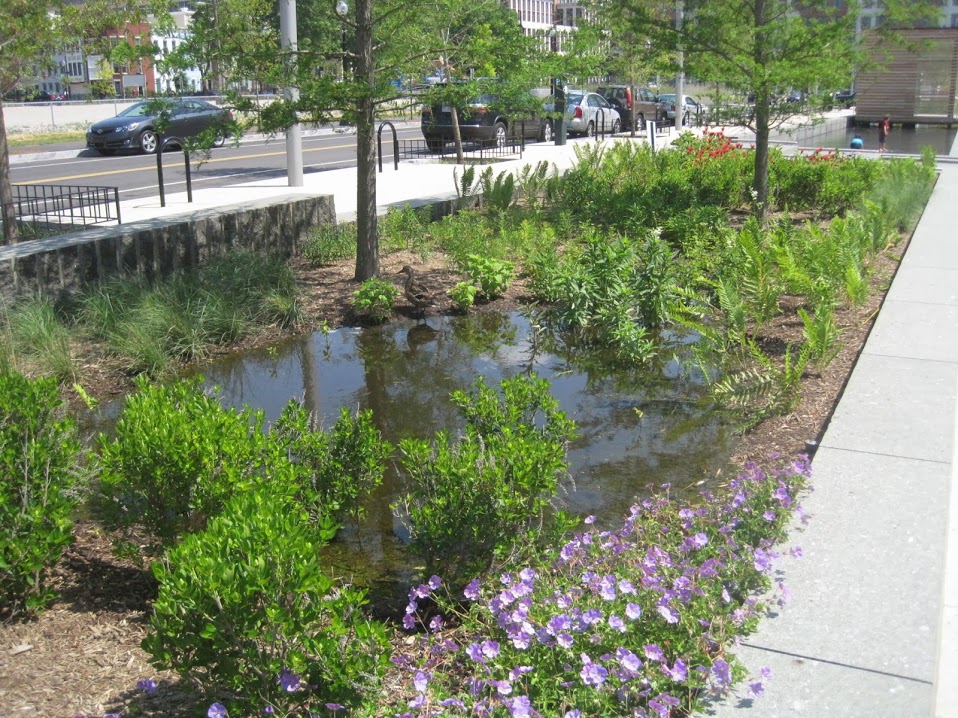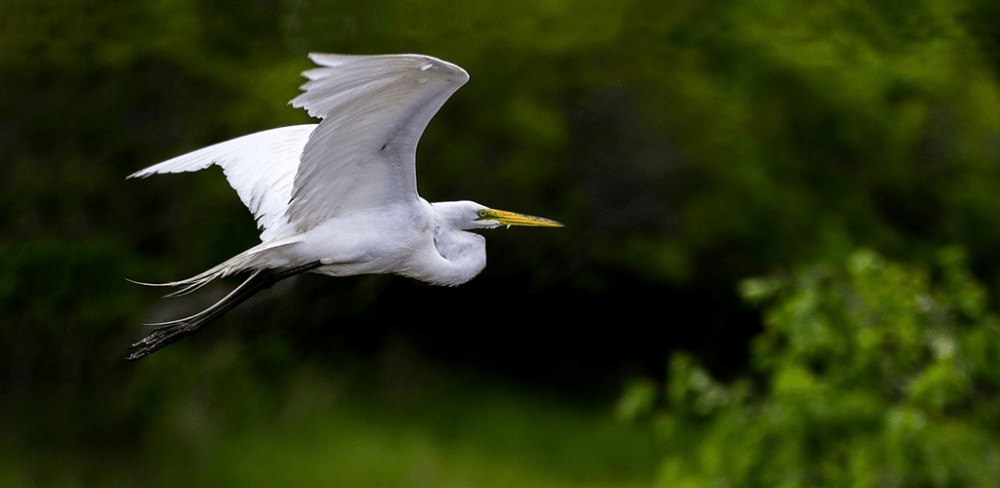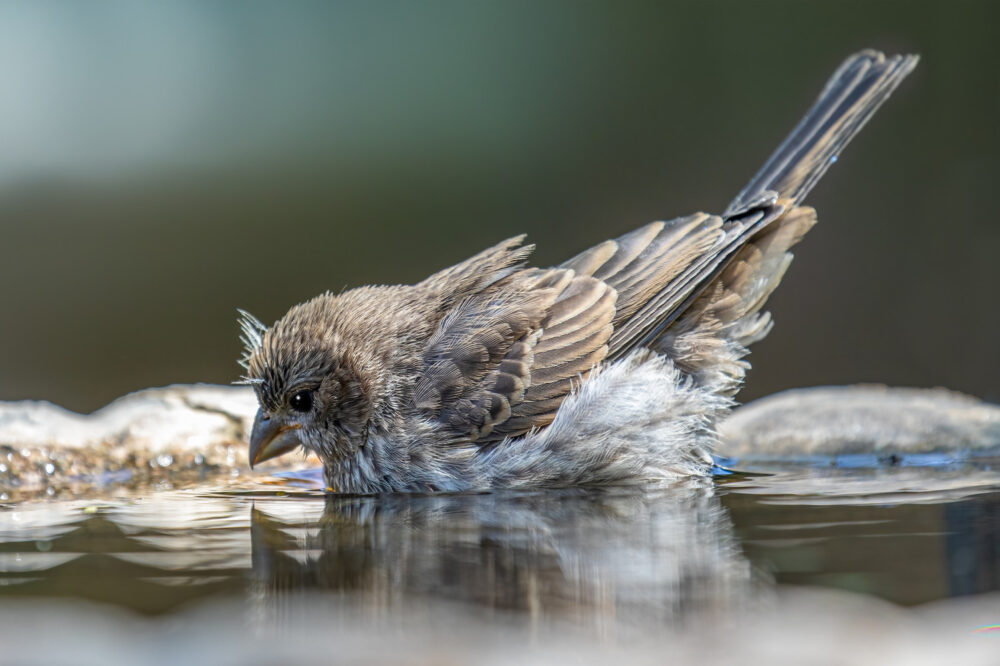We have much more to do and your continued support is needed now more than ever.
Wood Ducklings Jump, But Don’t Worry, They Bounce
Wood ducks are special to North America because they are found nowhere else in the world. They were threatened with near extinction in the late 1800s and early 1900s when habitat destruction and over-harvesting decimated populations. Their recovery is a celebrated wildlife success story, and is primarily attributed to the Migratory Bird Treaty Act of 1918, though the installation of artificial nest boxes (primarily after 1940) provided an extra boost.
Wood Duck Boxes
Wood ducks, buffleheads, goldeneyes and mergansers are all cavity nesting ducks. They search for tree holes made by woodpeckers, decay, wildfire or lightning. Suitable natural cavities are in short supply, and wood ducks readily accept the constructed alternatives. Nest sites are typically wooded areas (wood duck) near ponds or marshes. You can build, install and maintain your a wood duck box in your yard and have a hands-on role in local wildlife management.
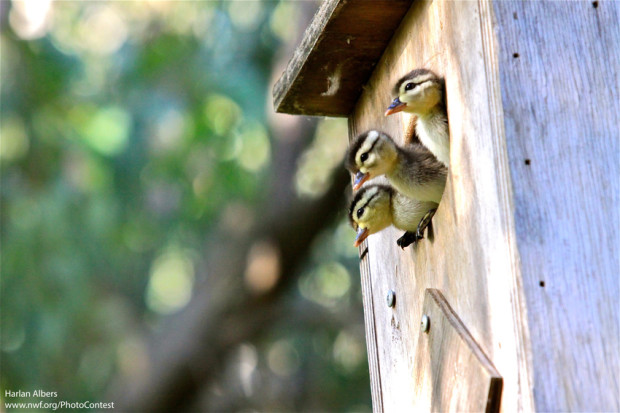
Dump Nesting
Although wood ducks pair up in January and breeding happens shortly after, nest boxes can be installed any time of year. Wood ducks are productive egg layers compared with other duck species. Hens will typically lay between 10-15 eggs, but a nest may have up to 40 eggs. Photographer Harlan Albers found 23 ducklings in his backyard nest box (see below), a result of dump nesting. If nests are too close together, a female wood duck may lay eggs in another hen’s nest. Luckily, the hen that has eggs dumped in her nest will raise them.
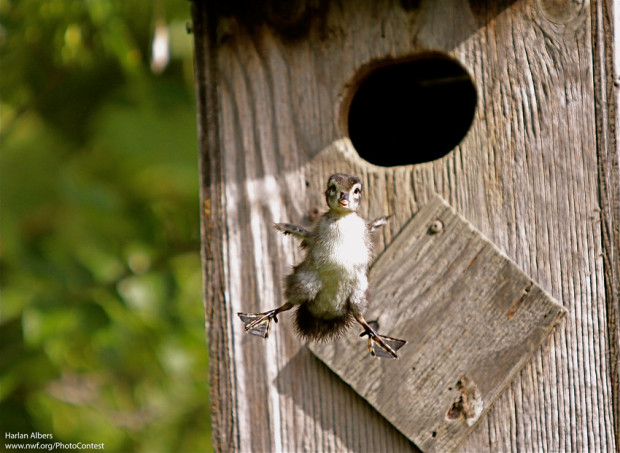
Leap of Faith
Just one day after hatching (occasionally up to 4 days), wood ducklings must take a leap of faith. One by one the ducklings jump from their nest, which can be over 65 feet above the ground. They are so light that the fall doesn’t harm the little ducklings. They make their way to water as their mother calls to them.
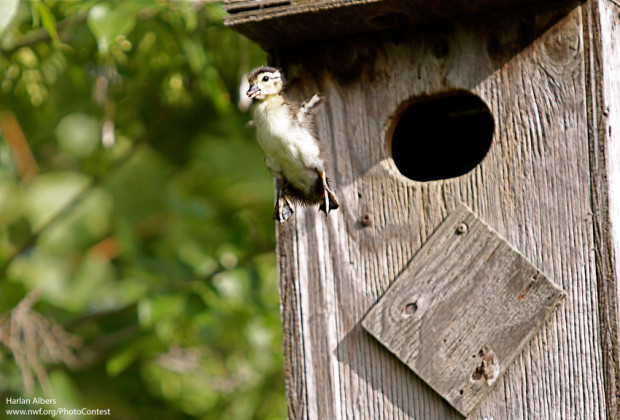
A DUCKumentary
This clip of a duckling jumping from its nest is from the PBS Nature episode about ducks. If you’re curious about ducks (pintails and mallards) and other waterfowl, you might want to check out the Ducks Unlimited section on waterfowl biology and NWF’s guide to waterfowl and climate change.
[youtube]http://youtu.be/d3vCUyENpmM[/youtube]
Help Local Wood Duck Populations
![]() Installing and monitoring a wood duck nest box in your yard can help local populations thrive. You can provide food, water, cover and a place to raise young for a variety of species, in addition to wood ducks. If you’re ready for the next step, consider certifying your yard as an official Wildlife Habitat through the National Wildlife Federation.
Installing and monitoring a wood duck nest box in your yard can help local populations thrive. You can provide food, water, cover and a place to raise young for a variety of species, in addition to wood ducks. If you’re ready for the next step, consider certifying your yard as an official Wildlife Habitat through the National Wildlife Federation.
Download the Wood Duck Nest Box instructions to see if your yard is a good place to install one.
Browse our garden for wildlife tips for more ways to help wildlife in your yard.
Learn more about the Duck Stamp Contest and how it’s highlighting a need for wetlands conservation.



